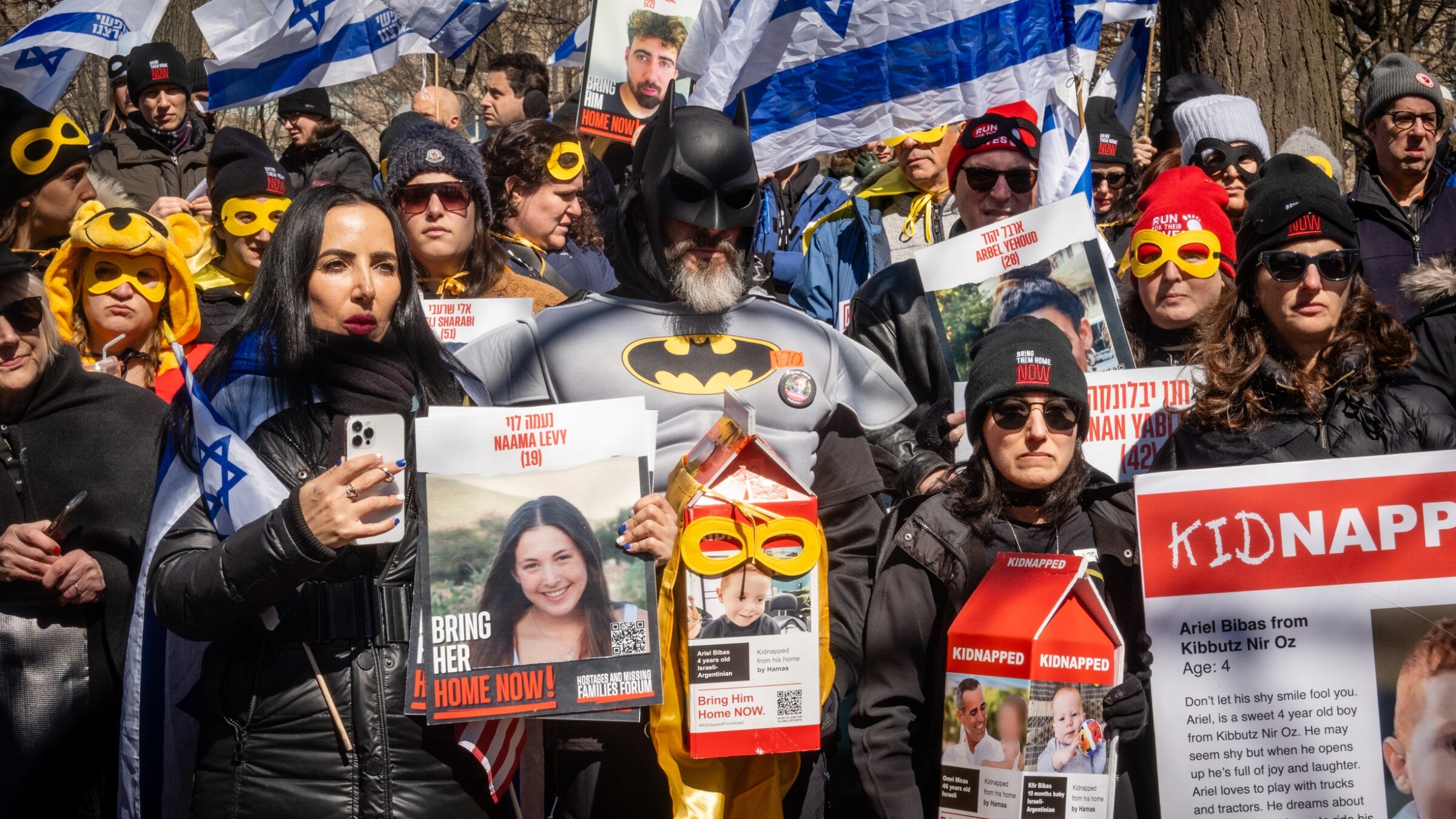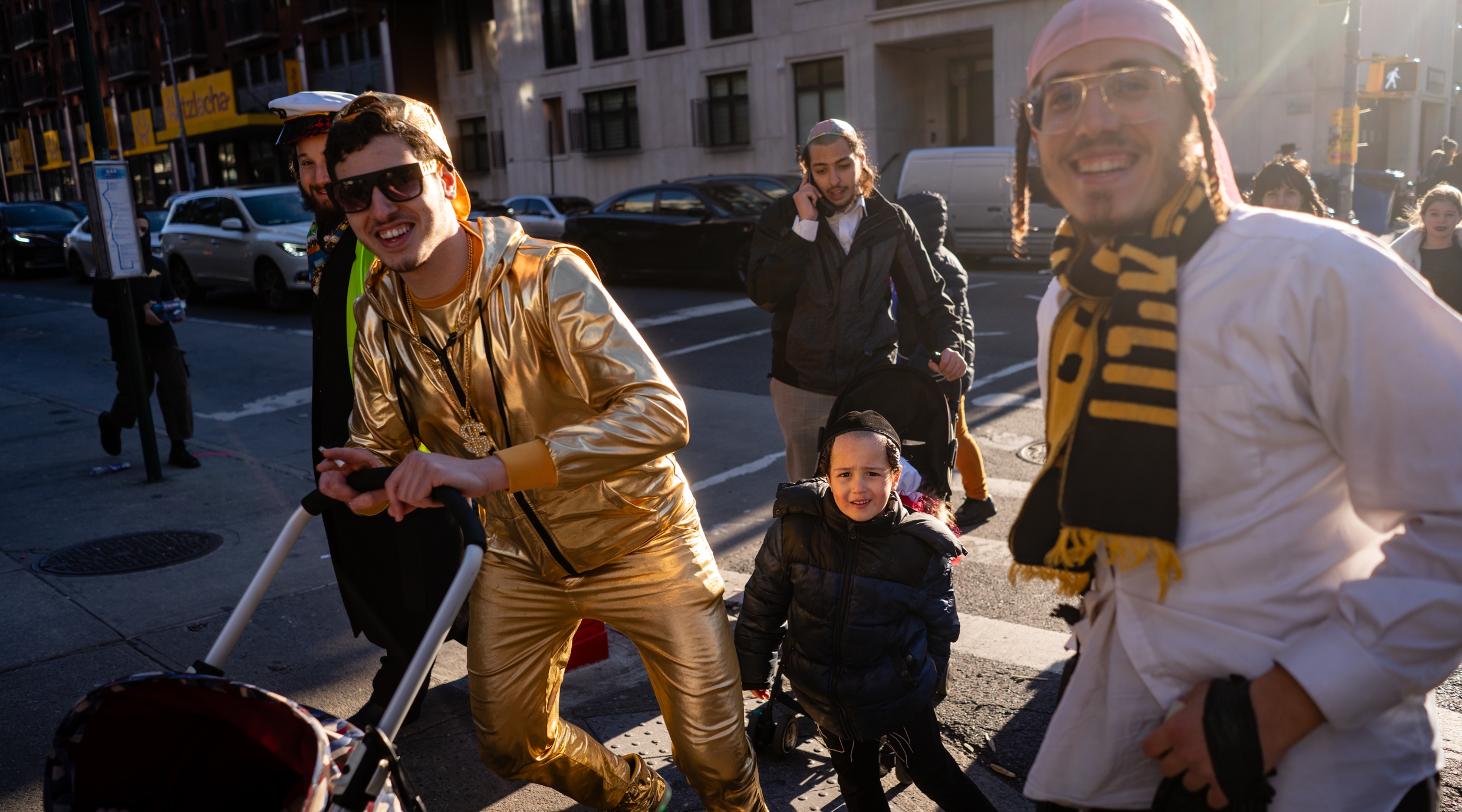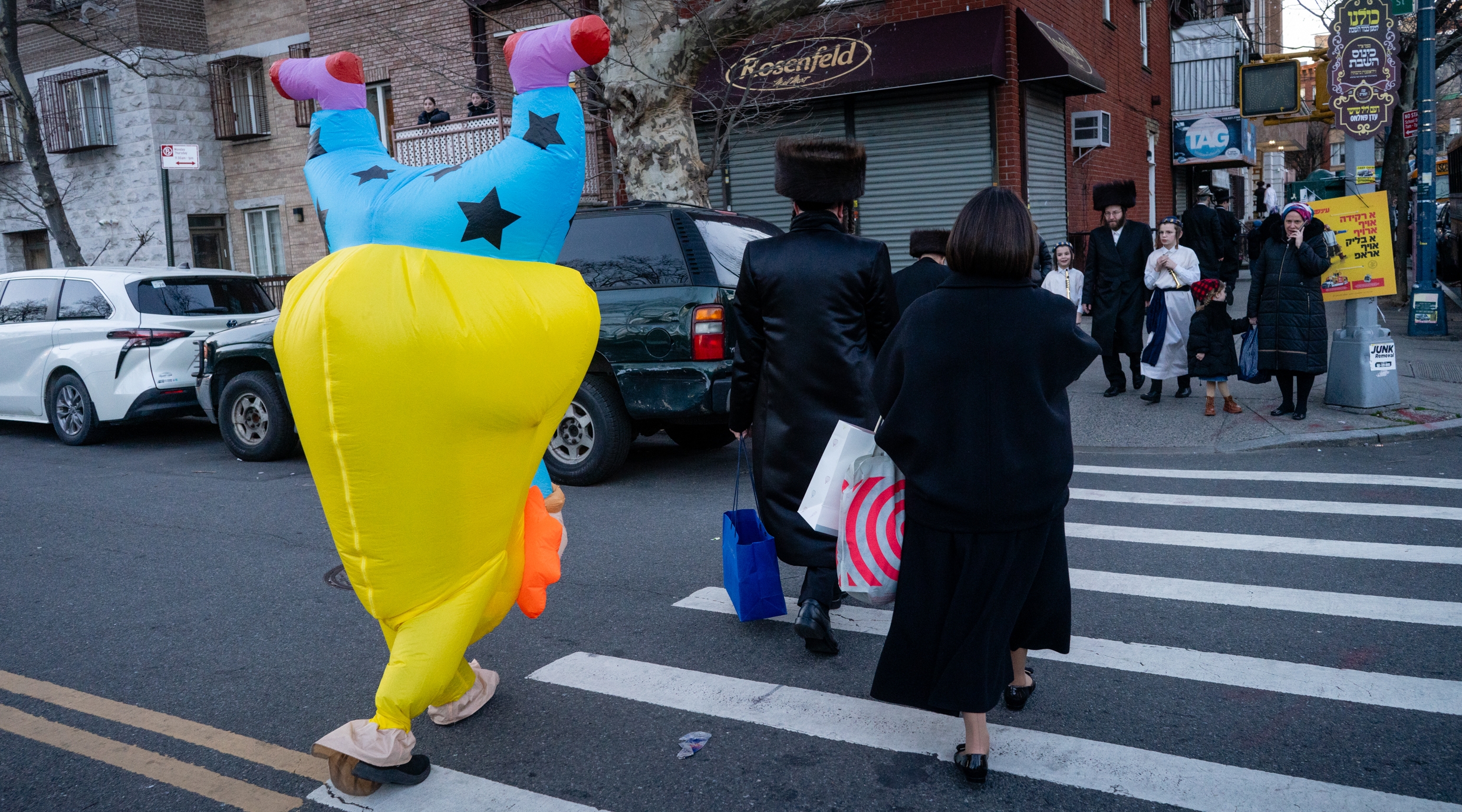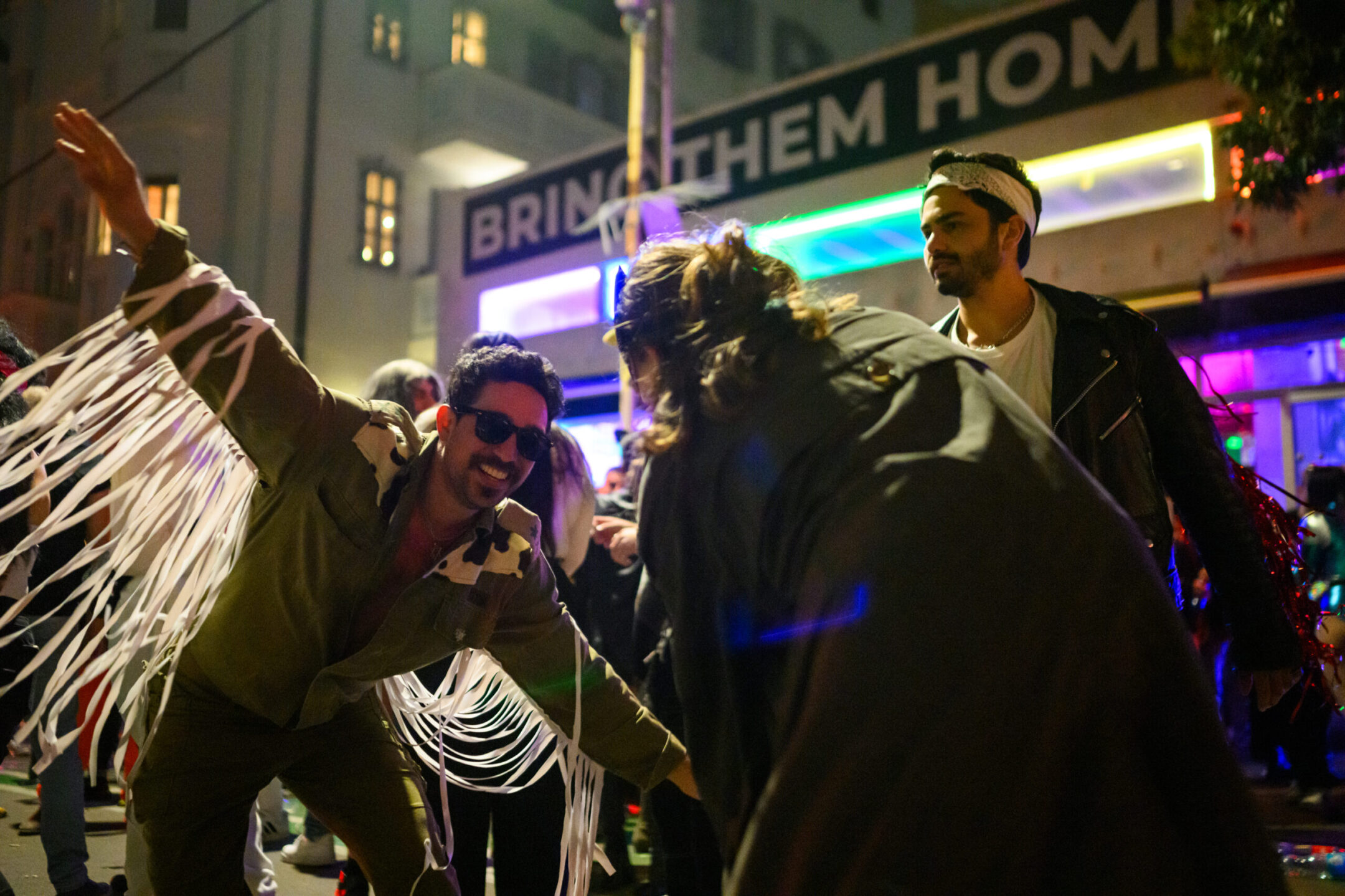From raucous street parties in Brooklyn to a somber, costumed rally in Central Park, New Yorkers celebrate the festive Jewish holiday of Purim
The gathering was one of several ways that advocates for the more than 130 hostages held by Hamas linked the Purim season to their cause

A Purim rally demanding the release of Hamas hostages in Central Park, March 24, 2024. (Luke Tress)
(New York Jewish Week) — A man in a Batman costume, his face concealed by a mask, held a milk carton bearing the face of Ariel Bibas, a 4-year-old Israeli held hostage in Gaza by Hamas.
Around him were hundreds of other demonstrators in black or yellow eye coverings, Batman masks and capes, many holding Israeli flags aloft.
The crowd gathered in Central Park on Sunday to mark a Purim in the shadow of the Oct. 7 attack and war in Gaza. Many people wore Batman get-ups to honor Ariel, who loved the superhero and used to run around his home in Kibbutz Nir Oz wearing the costume, seeking to “save” his neighbors.
The gathering was the latest in a weekly Sunday march through the park to demand the hostages’ release. It is organized by the Hostages and Missing Families Forum advocacy group, which estimated that 500 people attended.
“This is a very sad Purim for the Jewish people around the world,” Omer Lubaton Granot, the group’s lead organizer in New York City, said in a statement on Sunday. “Ariel won’t dress up in his Batman costume as he dreamed. Instead, Jews around the world will do so to remind the world that there is a 4 year old boy who is stuck in a dark pit.”
At the rally in Central Park, some attendees cried while listening to speakers describe the family’s ordeal. Others carried signs showing the Bibas family, before they were abducted and separated, wearing matching Batman outfits to humor their son.
The gathering was one of several ways that advocates for the more than 130 hostages held by Hamas linked the Purim season to their cause. On a fast day ahead of the holiday, tens of thousands of Jews worldwide collectively recited the Shema prayer on behalf of the hostages alongside a ceremony broadcast from Jerusalem’s Western Wall. Activists in Israel delivered the food baskets given as gifts on the holiday, called mishloach manot, to Israeli lawmakers in order to spur negotiations for a hostage release.
On the day itself, revelers around the world dressed up in costumes referencing the hostages — including the yellow ribbons and hostage posters that have become symbols of the global campaign for their release. The Israel-Hamas war, which is approaching the six-month mark, transformed the usually whimsical holiday in other ways this year as well — from new takes on the conflict retold in the Purim story to adjustments in Israel for soldiers returning to the front.

Purim in Williamsburg, Brooklyn, March 24, 2024. (Luke Tress)
Meanwhile, in the Hasidic neighborhoods of Brooklyn, the holiday retained its festive atmosphere.
In Williamsburg, home of the Satmar movement, young men in colorful, matching outfits danced on sidewalks next to tour buses that blared loud joyful Jewish music from speakers mounted on the vehicles’ roofs. Children in inflatable costumes tailed their parents on crosswalks and non-Jewish neighborhood residents stopped to take pictures.
In Crown Heights, the home base of the Chabad movement, costumed children collected dollar bills from their parents and passersby to donate to charity, another practice associated with Purim. There were astronauts, cowboys, farmers, Harry Potters and pirates. A father dressed as a beekeeper shepherded his three children dressed as bees down a sidewalk and a passenger in a parked car handed out cups of beer, shouting “L’chayim!”
The war was still present in those neighborhoods as well, though. Some children dressed as Israeli paratroopers, with red berets mounted on their shoulders, and as the festivities wound down, some revelers stopped at restaurants that had the faces of the hostages plastered on the windows.

Purim in Williamsburg, Brooklyn, March 24, 2024. (Luke Tress)

Eyal Lasry, 32, dressed as a cowboy/IDF soldier dances during Purim celebrations into the early hours of the morning near a large “Bring Them Home Now” banner on March 24, 2024 in Tel Aviv. (Alexi J. Rosenfeld/Getty Images)
This article originally appeared on JTA.org.
















